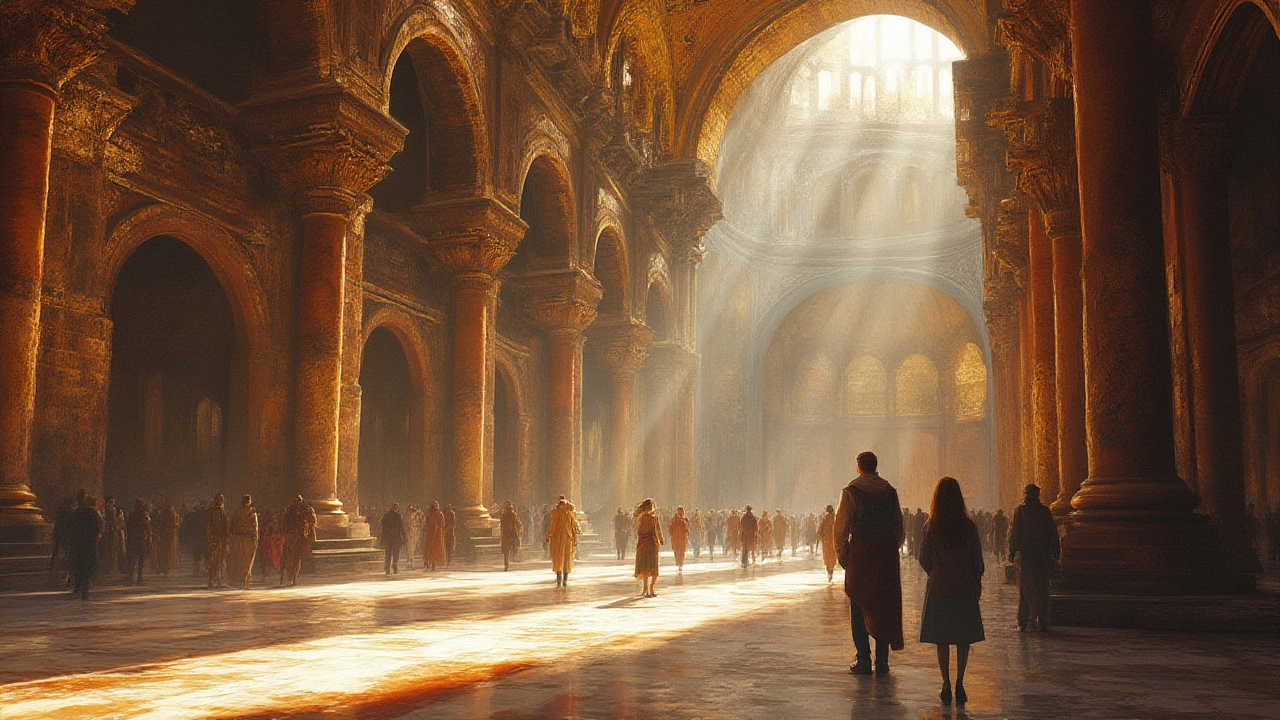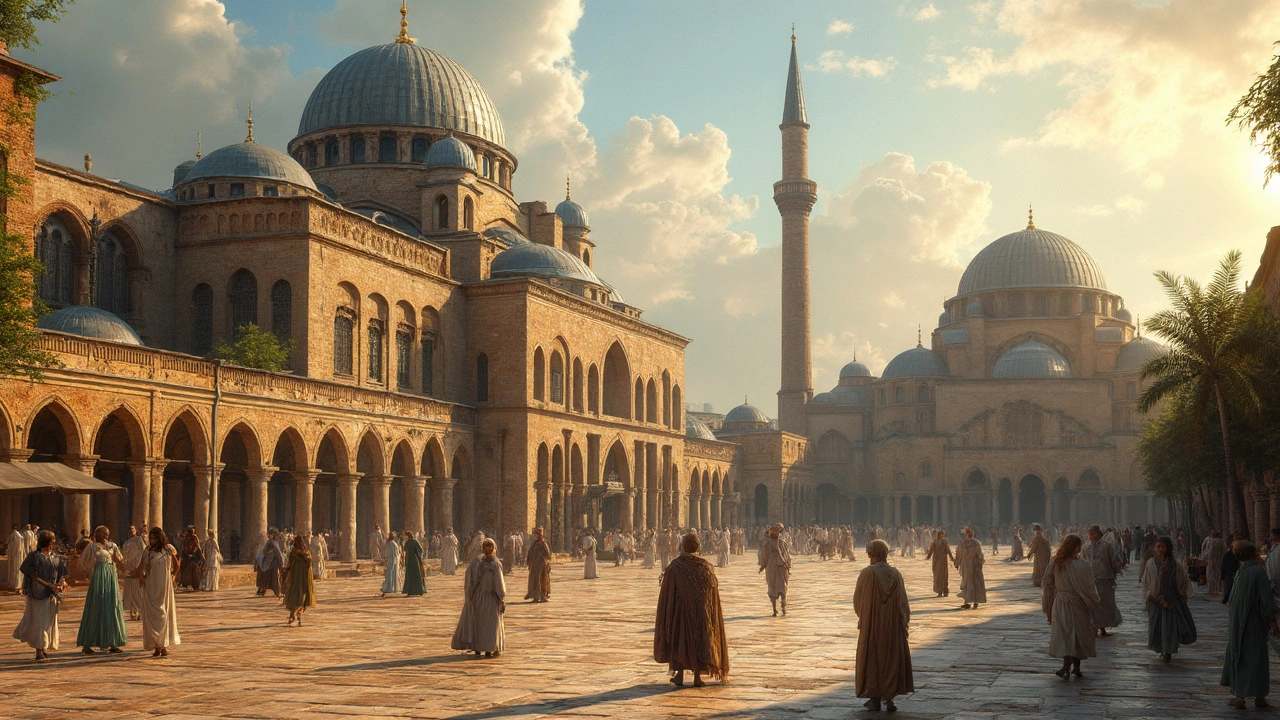Hagia Sophia: The Dome That Changed Architecture
Hagia Sophia’s dome held the record as the world’s largest for almost a thousand years. Built in 537 by Emperor Justinian, it shocked visitors with size and light. Over time it has been a church, a mosque, a museum, and — now — again an active mosque. That messy timeline makes it more than a building: it’s a witness to history and a constant in debates about art, religion, and preservation.
Why the dome mattered
What makes Hagia Sophia feel so modern is simple engineering: a massive dome set on pendentives. That clever trick lets a round dome sit on a square base. Engineers Anthemius and Isidore used lightweight bricks, layered mortar, and thin supporting arches to keep the weight under control. Inside, light pours through rings of windows at the dome’s base and turns stone into something almost weightless. Architects copied that idea across the Byzantine world and later in Ottoman mosque design.
What to look for inside Hagia Sophia
When you stand under the dome, pay attention to these details. First, the pendentives — the curved triangular pieces that bridge dome and walls — they’re the real secret to the dome’s magic. Second, mosaics: many early Christian mosaics survive in hidden corners, showing emperors, saints, and the Virgin with the Child. Third, Islamic additions: look for the large round wooden medallions painted with calligraphy, the mihrab facing Mecca, and the minbar (pulpit). Fourth, spolia: columns and capitals recycled from older buildings, each with a different texture and story. All these layers tell the building’s life across centuries.
Visiting tips and preservation notes
Want a better visit? Go early in the morning or late afternoon for softer light and fewer crowds. Dress respectfully — it’s an active place of worship at times — and be ready for a mix of tourists and worshippers. Photography is usually allowed, but follow local rules, especially during prayer. Wear comfortable shoes: floors are uneven in places. Preservation is ongoing and visible. The building sits on soft ground and faces seismic risk, so restorations focus on structural support and conserving fragile mosaics. That balancing act—keeping later Islamic additions while uncovering Byzantine art—sparks debate among conservators and visitors alike.
Hagia Sophia still matters because it taught builders how to fuse scale with light. Ottoman master architects used its lessons when they designed the Blue Mosque and Süleymaniye. If you love architecture, Hagia Sophia is a rare place where engineering, art, and history sit in the same room — noisy, complicated, and unforgettable. Check related reads on Byzantine and Ottoman architecture if you want more context and travel tips for Istanbul.

Byzantine Architecture: Cultural Meaning, Heritage, and Lasting Impact
Discover how Byzantine architecture shaped Eastern culture, faith, and art. Explore iconic buildings, their influence, and why these ancient walls still matter today.
Read more
Byzantine Architecture: The Synthesis of Classical and Eastern Styles
Dive into Byzantine architecture—the blend of Roman engineering and Eastern flair, from soaring domes to glowing mosaics, that still shapes buildings today.
Read more
Byzantine Architecture: The Grandeur That Changed Skylines
Unpack the magic behind Byzantine architecture and its impact on the world as we know it. This article explores why domes, mosaics, and spacious designs weren't just for looks but actually changed how cities and worship worked. If you've ever wondered how buildings like Hagia Sophia stood for centuries, you'll get real answers here. Whether you're planning a trip, studying history, or just love amazing structures, these insights will come in handy. You'll also discover fun facts and tips if you want to spot true Byzantine features in any city.
Read more